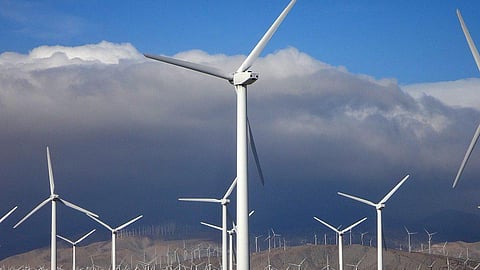
- Topics
- Feature
- Opportunities & Events
- Data
- Hindi Portal
- Topics
- Feature
- Opportunities & Events
- Data
- Hindi Portal

India’s ever-increasing energy demand is putting a heavy load on energy generating agencies. Shifting towards renewable energy entails a series of judicious steps in consultation with the government bodies, energy developers, market valuation, and consumers. The renewable energy shares 4% of gross energy consumption globally, suggesting that other sources still dominate the energy market.
In India, over 23% of energy production comes through renewable energy sources, out of which wind energy dominance is the highest (43.3%) as of 2019. The Government of India has proposed a target of 60 GW electricity generated through wind power and a cumulative renewable energy mission of 175 GW by 2022.
A recent study ‘Changing landscape of India's renewable energy and the contribution of wind energy’ indicates that wind energy contribution towards renewable energy sources in India is very promising. The study published in journal ‘Cleaner Engineering and Technology’ suggests that some critical aspects related to technologies, T&D, regulation, R&D, and social awareness and acceptance which need to be addressed.
India is implementing and operating various modes of electricity generation. The renewable energy developers, particularly wind energy, have gained significant knowledge of this technology over the past few decades. Now it has become a potential player among the renewable energy market competitors.
The sectors that consume the most electricity are domestic, industrial, commercial, traction (railway transport), agriculture, and others. The United Nation Environmental Program (UNEP) report on India has noted that as of 2019, about $90 billion investment has been made by various government funding in renewable energy sectors. This has placed India on the list of countries heavily invested in clean energy technologies.
In particular, wind energy has witnessed a rise in financial mobility since its first induction as a commercial market in 1986. As of 2019, total capital fund and liabilities stood around $0.95 billion (95 Crore Indian Rupees) with an expenditure of $0.28 billion, $0.1 billion on various wind power development projects, and had a total income of about $0.18 billion.
This sector has also witnessed various funding projects, with an average of 3–4 wind-farm development projects every year since the beginning of the 21st century (NIWE, 1998–20). Further, many monitoring stations such as meteorological mast have been installed with required funding, mainly from MNRE. These meteorological masts play a crucial role in power prediction for wind farm development.
Some of the significant challenges and suggestions in grid connectivity of the wind energy sector in India are (CERC, 2018–19; Irfan et al., 2019; Thapar et al., 2018):
Some critical observations with its possible strategic implications on wind energy improvement based on the present study are:
From India's context, some technical issues would require comprehensive cooperation between wind energy developers, research institutes, and government, where the role of government is mainly towards implementation and funding. Some suggestions for wind power development in India are -
Under the guidance of MNRE, Govt. of India has constituted OWESC (Offshore Wind Energy Steering Committee) to provide various policy frameworks for developing offshore wind farms in India.
Policy framework required for offshore wind energy development.
In order to make renewable energy accessible and acceptable for the whole population of India, it would certainly demand a great deal of involvement. Although the road ahead comes with many challenges, there is a need for some positive government initiatives.
The full article can be viewed here